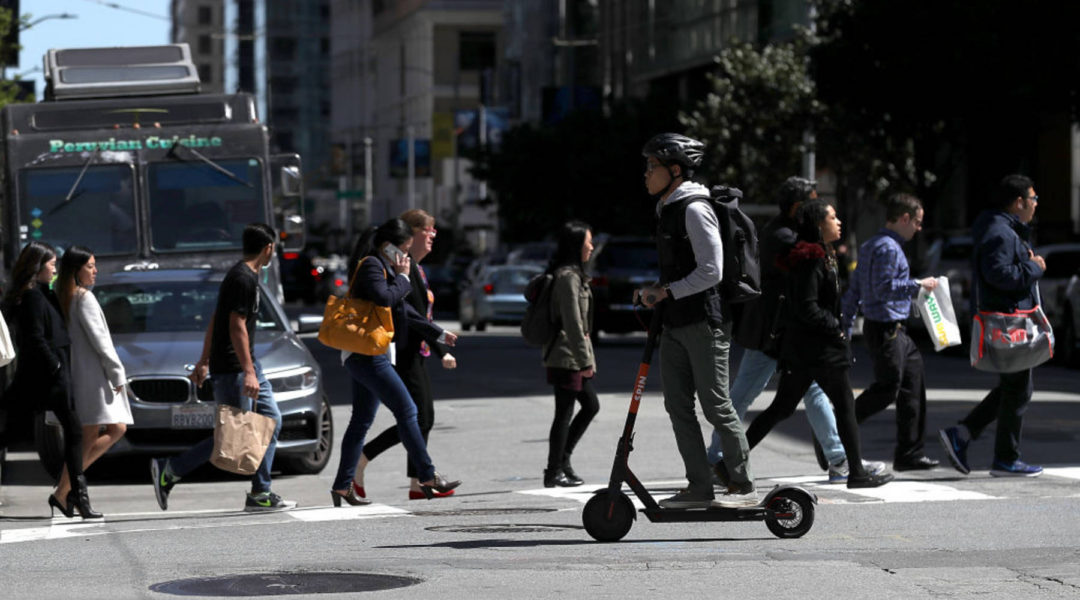Meghan McCarty Carino
Dec 5, 2018
Cities around the country are grappling with what transportation planners call “the last mile problem”: how to get people who don’t drive from a transit stop to their final destination faster than walking. It’s an especially big issue in low-income neighborhoods where many people don’t own cars and transit service can be spotty.
Dockless electric scooters have emerged as a promising solution, but they still face several barriers to widespread adoption.
For years, Erick Huerta and his Los Angeles group, People for Mobility Justice, have been big fans of bikes as a more affordable alternative to owning a car. They have worked to expand access to public bike sharing with discount programs and community outreach. But Huerta has started to realize traditional docked bikes can only go so far.
“It’s a whole process, right?,” he said. “They have to remove a parking space. They have to install the system where you have to check it out, and the bikes and all this other stuff. So seeing where the bikes are being placed, it’s super obvious that these are touristy locations.”
In his mostly Latino East L.A. neighborhood of Boyle Heights, there are no bike-share stations. But lately, here and there, he has been seeing electric scooters, the zippy devices that have practically taken over wealthier neighborhoods at the beach, more than a dozen miles away…
Read the full article: https://www.marketplace.org/2018/12/05/wealth-poverty/scooters-could-improve-mobility-low-income-areas-they-have-image-problem

